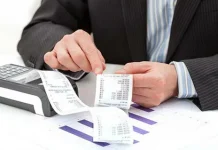The term “blockchain technology” may have come up in relation to digital currencies like Bitcoin over the past few years. You may even be inquisitive about the concept of blockchain technology. It seems that blockchain is a cliche, but only in the hypothetical sense, as there is no clear meaning that the typical person can understand.
A description of “what is blockchain technology,” including the underlying technology, how it works, and how it is impacting the digital environment, is vital.To be ready for the day when blockchain technology develops and becomes more user-friendly, you must educate yourself on this cutting-edge technology.
You are at the best place to learn the fundamentals of blockchain if you’re new to it. In this post, you may find out how to respond to the query “what is blockchain technology?”
Table of Contents
Nuts and Bolts of Blockchain
What is Blockchain?
A method of storing data called blockchain makes it challenging or impossible for the system to be changed, hacked, or used improperly. A distributed ledger that distributes and duplicates transactions among the network of computers involved is what a blockchain is, and it may be thought of as such. Blockchain technology is a system for keeping public transactional records across numerous databases in a network connected by peer-to-peer nodes (also referred to as “blocks”).
The term “digital ledger” is widely used to describe this kind of storage. The owner’s digital signature provides for both a validation and fraud security mechanism for every transaction in this ledger. It also serves to authenticate the transaction. The information in the digital ledger is therefore entirely safe.
In plain terms, the digital ledger can be compared to a network of computers that all share a Google spreadsheet, where transactional data are kept according to actual purchases. Although the data may be viewed by anybody, it cannot be altered, which is an intriguing feature.
How Does It Work?
Several businesses have recently begun utilising Blockchain technology, as you may have noticed. But how exactly does blockchain technology work? Is this a significant change or only an addition? Since blockchain technology is still in its early stages and has the potential to be revolutionary in the future, let’s start by demystifying it.
Blockchain combines three popular technologies:
- Keys for cryptography
- A network of peers that employs a shared ledger
- A method of computing that keeps track of network activity and records
A private key and a public key are the two components of a cryptography key. These methods facilitate the successful completion of transactions between two parties. A secure digital identity reference is created by combining each person’s unique set of two keys, which are unique to them. The hallmark of Blockchain technology is this secure identification.
In the world of cryptocurrencies, this identity is referred to as a “digital signature” and is used to authorise and control transactions. Peer-to-peer networks are combined with digital signatures, and a sizable group of people who serve as authorities utilizes the digital signature to agree on transactions and other matters.
You may Click here to carry out your Ethereum (ETH) transactions smoothly and easily. Additionally, you can access over 70 cryptocurrencies here.
A successfully protected transaction between the two network-connected parties happens when they approve an agreement validated by a mathematical verification. In order to conduct various forms of digital exchanges across the peer-to-peer network, Blockchain users use cryptography keys to sum up.
Transactional Process
One of the distinguishing features of blockchain technology is the way it confirms and validates transactions. For instance, if two parties were to carry out a transaction using their individual private and public keys, the first party would affix the transaction data to the second party’s public key. A block of information contains all of these data.
A timestamp, a digital signature, and other important information are included in the block. It should be made clear that the block is devoid of any information regarding the identities of the participants to the transaction. The block is subsequently distributed throughout the network, and the transaction is successful when the right user uses his private key to match it with the block.
Financial transactions, as well as those involving real estate, automobiles, and other items, can all be recorded on the blockchain.
Summing It up
To put it simply, a shared database or ledger is what a blockchain is. Blocks of data are used to store individual pieces of data, and every node in the network has a copy of the full database. Because the majority of the ledger will not reflect this change and would reject it, security is assured if someone tries to amend or delete an entry in one copy of the ledger.
The career potential in this subject is expanding quickly, even if we only briefly touched on the industry-wide potential of blockchain applications in this write-up. Any professional should constantly look for ways to gain an advantage over their rivals.








